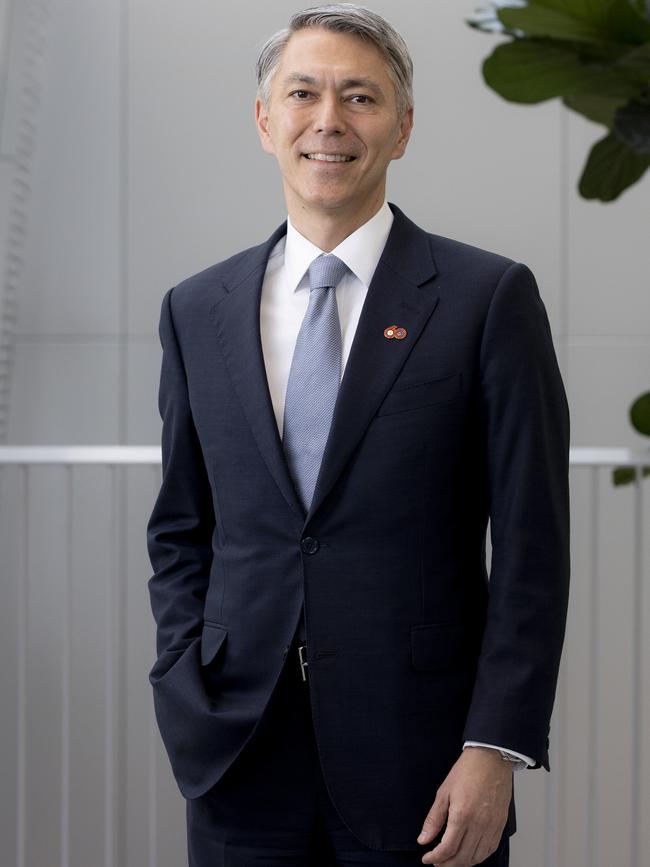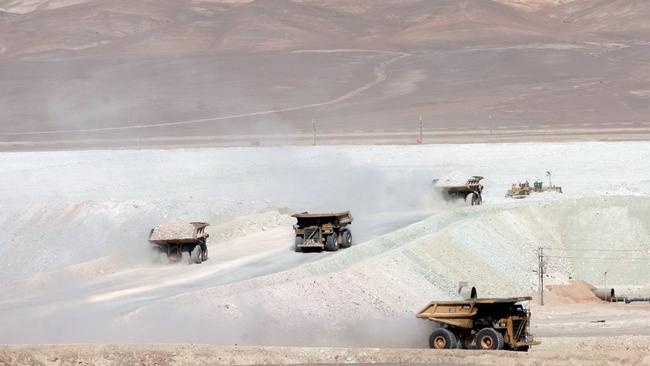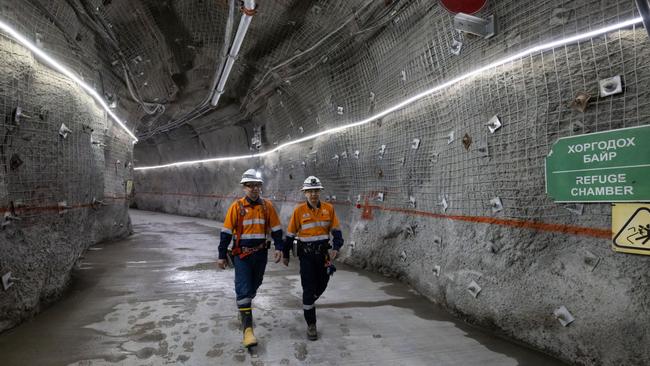BHP’s CEO Mike Henry needs to avoid facing his own ‘Origin’ moment
There’s a number of Anglo investors who believe the land grab for ‘red gold’ gives the miner a powerful bargaining chip.

Business
Don't miss out on the headlines from Business. Followed categories will be added to My News.
BHP’s buyout battle may not be with Anglo American’s board, but it could ultimately be a rump of UK investors who hold the fate of the deal.
They know what BHP wants and don’t want to trade off their future exposure to a purer play and copper miner without a fight.
BHP chief executive Mike Henry has days to come up with a solution to the stalemate with Anglo over the planned mega-merger. Momentum has begun to move behind Henry after sweetening his deal to $74bn last week, with Anglo’s bigger shareholders including BlackRock reportedly pushing the London-headquartered miner into talks, which are now underway.
However, BHP knows it too risks facing its own “Origin moment”.

Just last December, the Canadian asset manager Brookfield fell short in buying Origin Energy after the $19bn bid had won the full backing from the Australian energy company’s board.
Local investors, led by AustralianSuper, were concerned the sale and carve-up of Origin was giving too much long-term upside away, with the generator set to play a bigger strategic role in Australia’s energy future. After nearly a year, Brookfield was sent packing after being unable to secure minimum investor support for its bid.
BHP, and rival Rio Tinto and now Anglo, are rebuilding their mining empires around the metal. The commodity that has long been a proxy for global growth is regarded as the new gold, and the fight for Anglo is really the beginning of a bigger land grab for the metal.
Others such as South32 are moving into the metal in a big way. And there are multiple of billions of dollars being allocated to trying to grow copper.
There’s good reason for this.
As BHP’s Henry has pointed out, the world is going to need two times as much copper in the next three decades, as the metal plays a key role in the green energy transition play. An electric vehicle uses around four times the amount of copper than a petrol or diesel car. Wind turbines to transmission grids all demand copper.

At the same time, copper is getting scarcer and harder to mine. The major discoveries are becoming less common and deeper, which means more costly to bring to market. Even those large deposits are not readily available. Of the top dozen or so known large undeveloped resources, many are likely to remain underground given the environmental risks, particularly around water in bringing them to market.
Anglo’s chief executive Duncan Wanblad is all too happy to play this up.
He argues his plan to offload four major businesses to focus on copper plus iron ore and crop nutrients will deliver far more upside than BHP’s offer.
In recent days he has been telling investors his three South American copper mines, two producing and one yet to be developed, represent three of the world’s great available copper resources. Over time, the development of the mines could deliver one million tons of copper per annum, double Anglo’s current output.
Wanblad says copper is the metal for the “most important industrial transition of our generation” and his mines have millions of tonnes under the surface.
BHP’s challenge
The challenge for BHP is while it may be the world’s biggest copper miner, its ability to increase overall output without Anglo is limited. BHP currently produces around 1.8 million tonnes and after modest growth this will start falling from 2027.
The additional copper it picked up in the $9.6bn buyout of Oz Minerals a little over a year ago is being used to build out a copper hub in South Australia along with BHP’s Olympic Dam mine.
However, as production increases for South Australia, this will only replace declining output from its share of at the world’s biggest copper mine, Escondida in Chile. BHP is the 57 per cent owner and operator of Escondida, with Rio Tinto and Japan’s JECO the minority partners.
Brokerage Macquarie in recent days upgraded its outlook for copper prices by as much as 9 per cent. Macquarie’s longer-term forecasts for the metal, looking out beyond four years, were hiked by 7 per cent given its view on tight supply faced by the market.
Rio too has some of the biggest growth options in copper. Chief executive Jakob Stausholm took the plunge early in his tenure to clean up the messy ownership structure and more control of the part-owned and giant Oyu Tolgoi mine in Mongolia.
After a costly underground expansion in Mongolia, the copper mine is now in rapid ramp-up phase, with output expected to hit full capacity by early next decade. Rio is trying to progress underground mining at Kennecott in Utah, which should drive additional production within the next two years on track to 1 million tonnes per annum.

Elsewhere, BHP spin-off South32 has introduced copper into its portfolio in recent years, and it could emerge as a small, but, significant player in the market.
South32 chief executive Graham Kerr tells The Australian he has “options to grow” his copper exposure, that now represents around 8 per cent of earnings. “The world continues to need more copper and the reality is that over the last 10 to 15 years, there’s been very little spent on copper,” Kerr says.
Several Anglo shareholders including Legal & General and Church of England Pensions board, and the South African government-owned wealth fund, PIC, have expressed concerns about the double spin-out of Anglo’s two South African-based iron ore and platinum subsidiaries under BHP’s plan. Any deal would require a meaningful revision to take into account the risks, it says. All this will be top of mind for Henry through his long sought-after talks with the Anglo board this week.
johnstone@theaustralian.com.au
More Coverage
Originally published as BHP’s CEO Mike Henry needs to avoid facing his own ‘Origin’ moment





